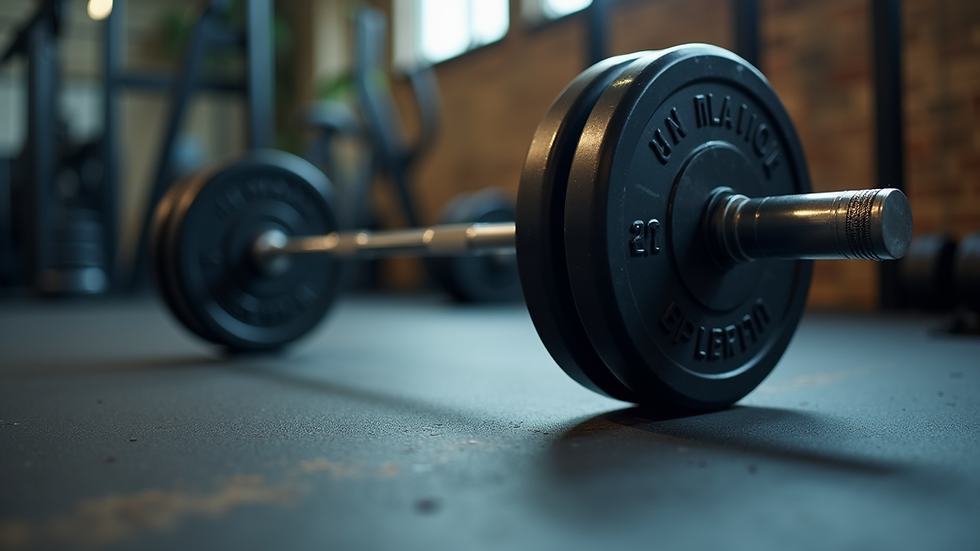Unlocking Strength Gains: The Benefits of Progressive Overloading
- fitbodyznz7
- Oct 27
- 4 min read
Progressive overloading is a key strategy in strength training that can lead to impressive improvements in muscle strength, endurance, and overall fitness. By consistently increasing the challenges your body faces, you can unlock your potential and achieve your fitness goals. This article explores the benefits of progressive overloading, how to implement it effectively, and why it is essential for anyone looking to improve their physical performance.
What is Progressive Overloading?
Progressive overloading means gradually increasing the amount of stress placed on your body during exercise. You can achieve this in several ways:
Increasing the weight you lift
Increasing the number of repetitions or sets
Reducing rest time between sets
The goal is to keep challenging your muscles so they continue to grow stronger over time.
The Science Behind Progressive Overloading
Progressive overloading is based on the science of how muscles adapt to stress. When you engage in resistance training, your muscles undergo tiny tears. Your body repairs these tears, which leads to muscle growth and strength gains. Research shows that without this progressive challenge, muscle adaptations can stall after just a few weeks. For example, a study found that athletes who followed a progressive overload regimen increased their squat strength by 20% over six weeks, while those who did not show little improvement.
Benefits of Progressive Overloading
1. Increased Muscle Strength
One of the primary advantages of progressive overloading is increased muscle strength. When you challenge your muscles with heavier weights or more repetitions, you stimulate muscle fibers to grow. For instance, a person who consistently lifts weights with progressive overload can increase their deadlift strength by 15% or more in just a few months.
2. Enhanced Muscle Hypertrophy
Muscle hypertrophy, or muscle growth, is another significant benefit of progressive overloading. By creating a stimulating environment for growth, you can see noticeable changes in muscle size and definition. Bodybuilders often increase their training volume by 10% or more weekly through progressive overload, resulting in more substantial muscle mass over time.
3. Improved Endurance
Progressive overload also enhances muscular endurance, which is vital for athletes and those participating in endurance activities. For example, runners who incorporate progressive overload can increase their running distance or speed significantly. Studies indicate that increasing the number of repetitions in strength training exercises can lead to up to a 30% improvement in endurance levels.
4. Prevention of Plateaus
Hitting a plateau in your fitness journey can be frustrating. Progressive overloading helps prevent this by continuously promoting change in your workouts. For example, if you routinely add weight or vary your exercises, you can consistently challenge your muscles. A 2019 study showed that individuals using progressive overload avoided strength plateaus 70% of the time compared to those who did not.
5. Increased Motivation
Progressive overloading can boost motivation. Setting measurable goals like lifting heavier weights or completing more repetitions gives you a clear target. This positive reinforcement keeps you engaged and committed to your fitness routine.
6. Enhanced Functional Fitness
Functional fitness exercises mimic everyday activities, improving your ability to perform daily tasks. By increasing your strength and endurance through progressive overload, you'll find activities like carrying groceries or climbing stairs easier. A survey found that 85% of individuals who incorporated progressive overload reported better performance in daily tasks.
7. Improved Bone Density
Engaging in resistance training paired with progressive overload improves bone density. Lifting heavier weights places stress on your bones, triggering the process of bone remodeling, which strengthens bones. This is particularly crucial for older adults, as studies show that individuals who lift weights regularly can see a 10-15% increase in bone density, reducing the risk of osteoporosis.
How to Implement Progressive Overloading
1. Increase Weight
Increasing the weight you lift is one of the easiest forms of progressive overload. Aim to boost your weight by 5-10% once you can comfortably complete your target repetition range.
2. Increase Repetitions
If you're not ready to increase the weight, consider adding a few repetitions to your sets. For example, if you normally perform 8 reps, try increasing to 10 reps once it feels manageable.
3. Increase Sets
You can also increase the number of sets you do. If you typically perform three sets, consider working up to four sets for an additional challenge.
4. Decrease Rest Time
Reducing rest time between sets increases the intensity of your workout. Shortening your rest period by 30 seconds can significantly boost the challenge to your muscles.
5. Vary Your Exercises
Changing your exercises can also promote progressive overload. For example, switching from a bench press to a decline press can target your chest muscles differently and stimulate growth.

Common Mistakes to Avoid
1. Overdoing It
While pushing your limits is essential, overdoing it can lead to injuries. Gradually increase workout intensity and ensure you listen to your body.
2. Neglecting Form
As you lift heavier weights, maintaining proper form is crucial. Poor form increases the risk of injury and can hinder your progress.
3. Ignoring Recovery
Recovery is just as important as the workouts. Make sure to get enough sleep, stay hydrated, and take rest days to allow your muscles to recover.
4. Lack of Consistency
To reap the benefits of progressive overloading, you must stay consistent. Commit to your training and make gradual adjustments as needed. Regularly assess your progress to stay on track.
Your Path to Greater Fitness
Progressive overloading is a powerful way to enhance your strength, endurance, and overall fitness. By gradually increasing the demands placed on your body, you can achieve significant improvements in your performance. Whether you are just starting or are an experienced athlete, incorporating progressive overload into your training can lead to noticeable results. Remember to stay consistent, listen to your body, and enjoy your journey toward becoming stronger and fitter.






Comments